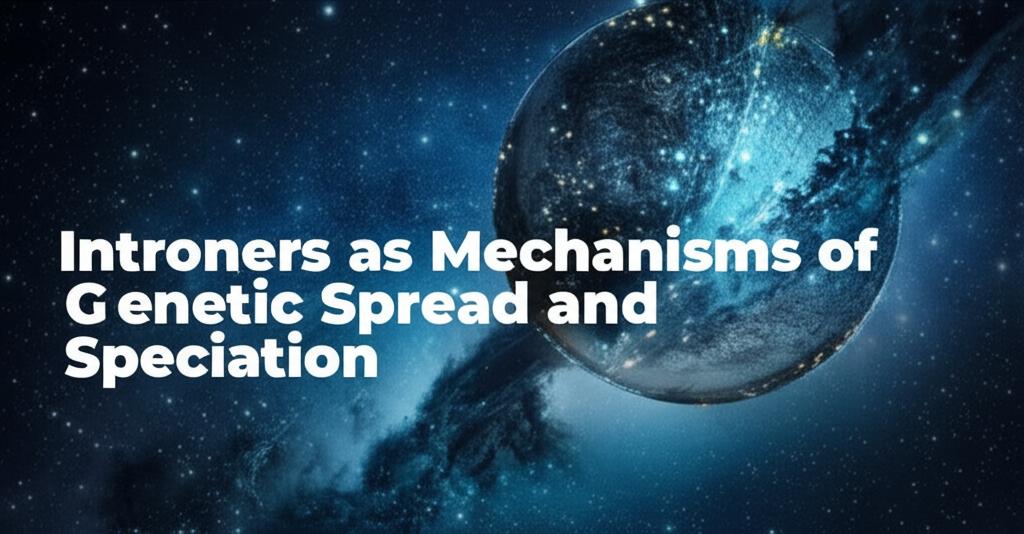Introners, a type of "selfish" genetic element, are emerging as significant players in the complex tapestry of genome evolution, influencing both the spread of genetic material and potentially the divergence of species. These transposable elements, essentially "jumping genes," have the remarkable ability to create new introns—non-coding DNA sequences—within genes. Recent research has illuminated how introners contribute to genomic complexity and the mechanisms by which they proliferate, both within a single species' DNA and, surprisingly, across species boundaries.
One of the most striking findings is the confirmation of horizontal gene transfer (HGT) of introners between unrelated species. Studies have provided evidence of introners "jumping" between species that are vastly separated on the evolutionary tree, sometimes with last common ancestors dating back over a billion years. For instance, researchers have documented introner HGT between organisms as diverse as sea sponges and marine protists called dinoflagellates. This interspecies transfer suggests that introners can act as vehicles for genetic material to move between otherwise reproductively isolated lineages, a process that could have profound evolutionary consequences. The proposed mechanism for such transfers sometimes involves viruses, particularly giant viruses, which may act as carriers, picking up introners from one host and delivering them to another.
Within a species, introners contribute to the expansion and diversification of introns. They are considered a primary driver of "intron burst" events, where a genome rapidly gains a large number of new introns. By inserting themselves into existing gene structures, introners can influence gene expression and facilitate alternative splicing. Alternative splicing is a crucial process where a single gene can produce multiple different proteins, thereby increasing an organism's functional complexity. While many introner insertions might be neutral or even slightly deleterious, some may eventually be co-opted by the host genome and contribute to evolutionary innovation.
The distribution of introners appears to be non-random across the tree of life. They are found in a wide array of eukaryotic organisms, including algae, fungi, various single-celled eukaryotes, and even some marine invertebrates like sea urchins and tunicates. Notably, studies have indicated a higher prevalence of introners in aquatic organisms. This observation aligns with the understanding that HGT events are generally more common in marine environments.
The activity of introners is intrinsically linked to the dynamics of transposable elements (TEs). Introners themselves are thought to have evolved multiple times independently from different families of TEs. Their ability to successfully propagate relies on their capacity to be spliced out of the host gene's coding sequence, minimizing harm to the host while ensuring their own replication.
The connection between introner activity and speciation is an area of ongoing research. The introduction of novel genetic material and the alteration of gene structures and regulation by introners could potentially contribute to reproductive isolation between populations. If different populations accumulate distinct sets of introners, this could lead to incompatibilities in hybrid offspring, a key step in the formation of new species. The observation that distinct lineages of organisms, such as the green alga Micromonas, possess unique families of introner elements suggests a potential link between introner evolution and the divergence of these lineages.
In summary, introners are increasingly recognized as potent agents of genetic change. Their ability to generate new introns, facilitate alternative splicing, and mediate horizontal gene transfer contributes significantly to genome evolution and complexity. While the precise mechanisms and full impact on speciation are still being unraveled, introners represent a fascinating example of how "selfish" genetic elements can inadvertently drive evolutionary innovation and shape the diversity of life.

